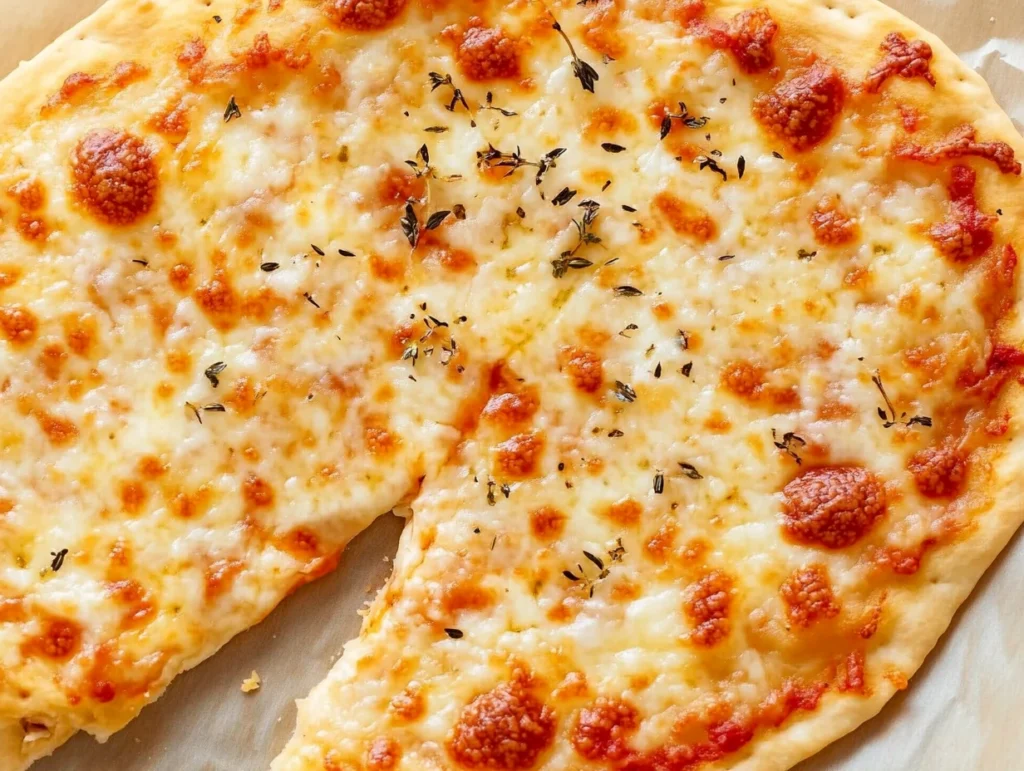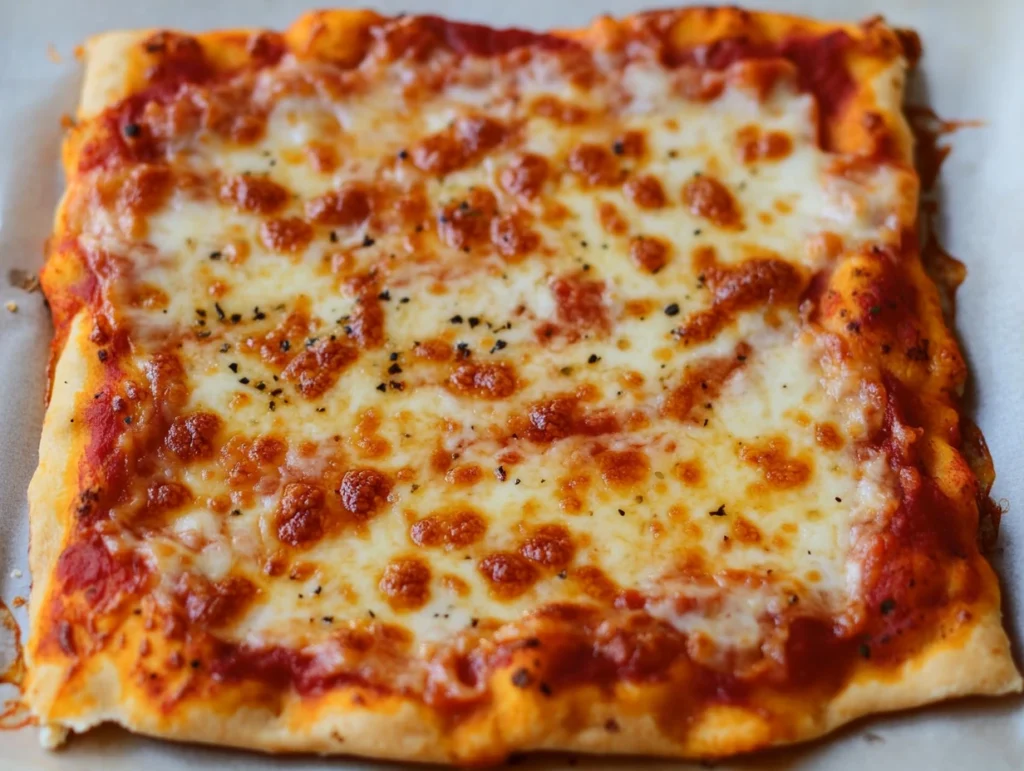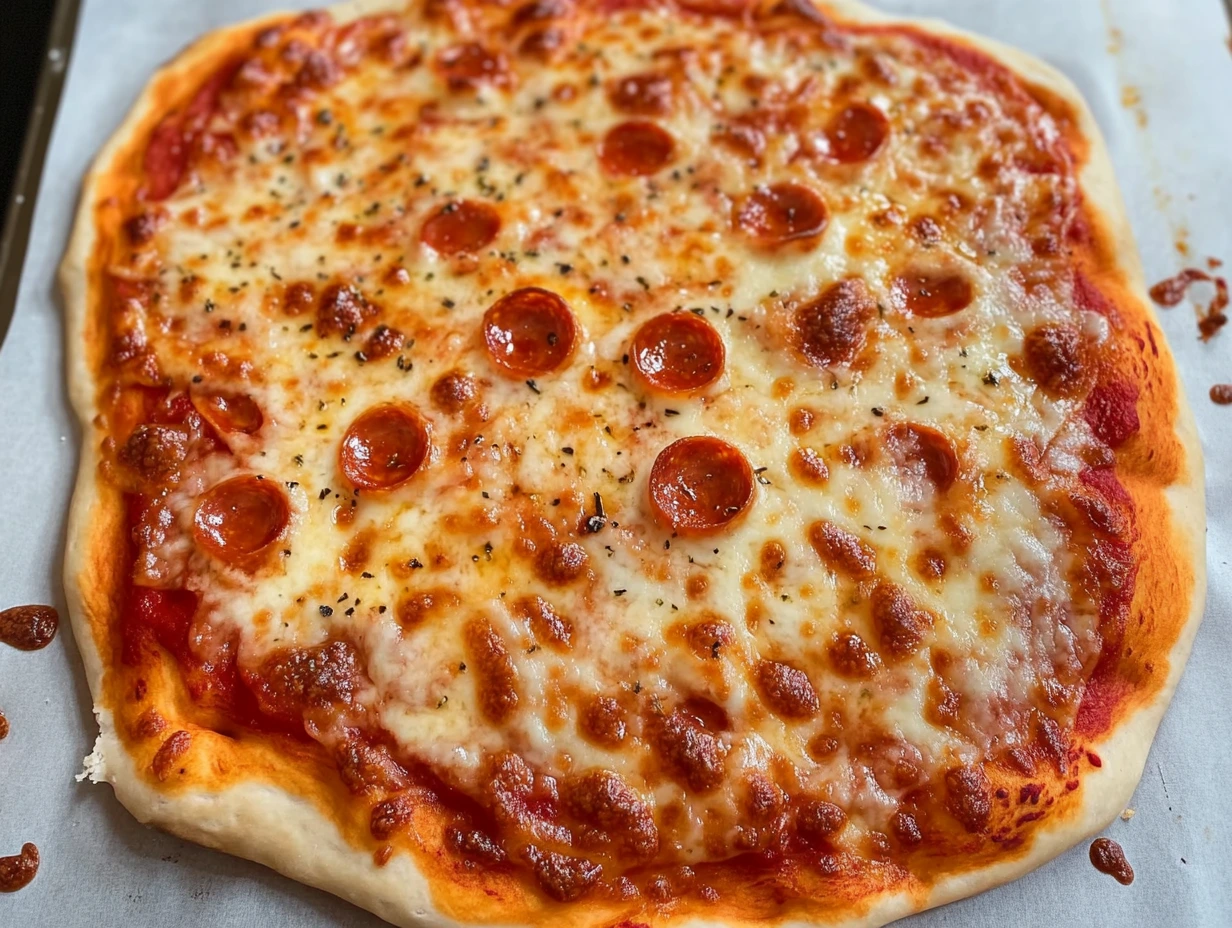Cottage Cheese Pizza Crust: Your New Favorite Twist on Pizza Night

If you’re like most people, pizza holds a special place in your heart. It’s comforting, endlessly customizable, and perfect for everything from a cozy night in to a gathering with friends. But sometimes, you might want to shake things up a bit—whether it’s to try something new or to find a crust that’s a little lighter without sacrificing the joy that pizza brings. Enter cottage cheese pizza crust! It’s a fun and easy way to enjoy pizza with a creamy, cheesy base that adds a delightful twist to your usual slice.
Let’s take a walk through everything you need to know to make this recipe your own. You’ll not only learn how to make it but also how to personalize it and get tips for making the process as smooth as possible. Ready to roll up your sleeves? Let’s get started!
What Makes Cottage Cheese Pizza Crust So Special?
You might be wondering, “Why cottage cheese?” Well, it’s not just about swapping out traditional ingredients for the sake of it. Cottage cheese brings a few key qualities to the table (or in this case, to your crust):
- It’s naturally rich and creamy, which gives your crust a little extra flavor.
- Its texture works beautifully when blended, creating a batter that’s easy to spread and bake.
- Cottage cheese pairs wonderfully with savory toppings, making it a natural fit for pizza.
If you’re already a fan of cottage cheese, this recipe is a no-brainer. But even if you’re not sure about it yet, give it a try. Once it’s baked into a golden crust, it transforms into something entirely different—think crispy edges and a satisfying, slightly chewy center.
Gathering Your Ingredients
Before you get started, let’s go over what you’ll need. Don’t worry—this recipe uses simple, straightforward ingredients that you probably already have in your kitchen or can easily find at your local grocery store.
For the Crust:
- 1 cup cottage cheese (choose your favorite type—low-fat, full-fat, or even flavored if you’re feeling adventurous)
- 2 large eggs
- 1 cup shredded mozzarella cheese
- 1/4 cup grated Parmesan cheese
- 1/2 cup almond flour (or coconut flour as a substitute)
- 1/2 teaspoon garlic powder
- 1/2 teaspoon dried oregano
- A pinch of salt and pepper
Toppings (Optional):
This is where you can have fun! Some classic topping ideas include:
- Marinara sauce or pesto
- More shredded mozzarella or a cheese blend
- Pepperoni, sausage, or shredded chicken
- Fresh vegetables like mushrooms, bell peppers, onions, or spinach
- Fresh basil, arugula, or chili flakes for garnish
Feel free to mix and match based on what you’re craving—or what you have in your fridge.
How to Make Cottage Cheese Pizza Crust
Now, the fun begins. Making this crust is straightforward, and you’ll feel like a pizza pro by the time you’re done. Here’s how to do it step by step:
Step 1: Prep Your Workspace
Start by preheating your oven to 400°F (200°C). Grab a baking sheet or pizza stone and line it with parchment paper. This will help you avoid any sticky messes later.
Step 2: Blend Your Cottage Cheese
If your cottage cheese has a chunky texture, pop it into a blender or food processor and blend until smooth. This isn’t strictly necessary, but it gives your crust a more uniform consistency.
Step 3: Combine Your Ingredients
In a large mixing bowl, combine your blended cottage cheese, eggs, mozzarella, Parmesan, almond flour, garlic powder, oregano, salt, and pepper. Stir everything together until you have a thick, sticky batter. It might not look like traditional pizza dough, but trust me, it works!
Step 4: Shape Your Crust
Spoon the batter onto your prepared baking sheet. Using the back of a spoon or a spatula, spread it into a circle or rectangle, depending on your preferred pizza shape. Keep it about 1/4 inch thick for the best results.
Step 5: Bake the Crust
Place your crust in the oven and bake for 15–20 minutes. You’ll know it’s ready when the edges turn golden brown and the center feels firm to the touch.
Step 6: Add Your Toppings
Once the crust is baked, let it cool for a few minutes. Then, layer on your favorite toppings—sauce, cheese, meats, veggies, or whatever else you’re in the mood for.
Step 7: Finish Baking
Return your pizza to the oven for another 10–12 minutes, or until the cheese is melted and bubbly. Keep an eye on it so you don’t miss that perfect golden topping.
Step 8: Slice and Serve
Let your pizza rest for a couple of minutes before slicing. Then, dig in and enjoy every cheesy, crispy bite!

Tips to Make Your Pizza Night Even Better
Every great recipe comes with a few handy tricks. Here are some tips to help you nail this crust every time:
- Don’t Skip the Parchment Paper
The batter can be a bit sticky, so parchment paper is a lifesaver. It also makes cleanup a breeze. - Customize the Seasonings
Feel free to play around with the herbs and spices in your crust. Add a pinch of red pepper flakes for heat or some fresh rosemary for an earthy touch. - Shape Doesn’t Have to Be Perfect
If your crust ends up a little uneven, don’t stress. Homemade pizza is all about personality—it doesn’t have to look like it came from a pizzeria. - Get Creative with Toppings
Experiment with unexpected combos like prosciutto and arugula, barbecue chicken, or even a breakfast pizza with eggs and bacon.
A Few Fun Variations to Try
If you’re in the mood to experiment, here are a few ideas to take this crust to the next level:
Mini Pizzas for a Crowd
Divide the batter into smaller portions and spread them into mini crusts. Perfect for serving a group, letting everyone customize their toppings, or just enjoying bite-sized pizzas.
Garlic and Herb Crust
Mix some minced garlic and fresh herbs (like thyme or parsley) into the batter. It’ll add an aromatic twist to your crust.
Sweet Pizza Crust
Yes, you read that right! Skip the savory seasonings and add a teaspoon of cinnamon and a touch of sugar to the batter. Top with cream cheese, fresh fruits, and a drizzle of honey for a dessert pizza that’ll wow your taste buds.
Creative Twists on Cottage Cheese Pizza Crust
The beauty of a cottage cheese pizza crust is its flexibility. You can adapt it to fit various lifestyles, preferences, or trending culinary ideas. Here’s a breakdown of how you can make this crust your own based on different approaches and inspirations:
Cottage Cheese Pizza Crust No Flour
If you’re looking to skip flour altogether, you’re in luck. The natural creaminess of cottage cheese and the binding power of eggs make this crust possible without any added flours. Instead of almond or coconut flour, you can rely solely on cheeses like Parmesan and mozzarella to provide structure. For an even firmer texture, you can incorporate ground flaxseed or psyllium husk as a flour substitute. This approach creates a crust that’s light, cheesy, and perfect for those avoiding any type of flour.
Cottage Cheese Pizza Crust Carnivore
For those following a carnivore diet, this version is a dream come true. By sticking to purely animal-based ingredients, you can craft a crust that’s entirely meat- and cheese-based. Replace the almond flour with finely ground pork rinds for a binding agent, and skip any plant-based seasonings like oregano. The result is a rich, indulgent crust that pairs perfectly with toppings like crispy bacon, sausage, or even thinly sliced steak.
Keto Cottage Cheese Pizza Crust
The cottage cheese pizza crust naturally aligns with keto principles due to its low-carb profile. To ensure it’s fully keto-friendly, you can use almond or coconut flour, as they’re low in carbohydrates and add a nice texture to the crust. Pair it with keto-approved toppings like mozzarella, pepperoni, olives, and a low-sugar marinara sauce. This variation is perfect for anyone managing their carb intake while still indulging in pizza night.
Viral Cottage Cheese Pizza Crust
If you’ve seen this recipe trending online, you know it’s earned its moment of fame. The viral cottage cheese pizza crust has taken off thanks to its simplicity, health-conscious ingredients, and amazing taste. People love to share their variations, from adding unexpected ingredients like nutritional yeast for a boost of umami to creating themed toppings like margarita-style or Hawaiian-inspired pizzas. Join the trend and share your version on social media—you might inspire others to try it!
Cauliflower Cottage Cheese Pizza Crust
For an added veggie boost, combine cauliflower with cottage cheese to create a crust that’s both nutritious and flavorful. You’ll need to start by steaming or ricing the cauliflower, then squeezing out as much moisture as possible before mixing it into the batter. The cauliflower adds a mild flavor and complements the creamy cottage cheese. It’s a fantastic option for sneaking some extra veggies into your meal while still enjoying the texture of a classic pizza crust.
Cottage Cheese Pizza Crust with Egg
Eggs are an essential ingredient in this recipe, serving as a natural binder to hold everything together. The addition of eggs ensures that your crust bakes into a cohesive, sliceable base. For an egg-forward flavor, consider adding an extra egg to the mix and topping your pizza with scrambled or fried eggs for a brunch-style twist.
Cottage Cheese Pizza Crust with Flour
If you’re not avoiding flour, this version offers a more traditional texture while still retaining the unique flavor of cottage cheese. You can use all-purpose flour for a classic approach or whole wheat flour for added fiber. The result is a sturdier crust that’s easy to handle and pairs beautifully with any toppings you choose. For an even richer flavor, try incorporating a mix of almond flour and a small amount of all-purpose flour.
Common Questions About Cottage Cheese Pizza Crust
You’re not alone if you have a few questions before diving in. Let’s cover some of the most common ones:
A: Can I use a different cheese in the crust?
Absolutely. While cottage cheese works wonderfully, you can try ricotta or cream cheese for a slightly different flavor and texture.
Q: How do I store leftovers?
Leftover pizza can be stored in an airtight container in the fridge for up to 3 days. Reheat it in the oven or on the stovetop to keep the crust crispy.
A: Yes, you can freeze the crust.
Yes! Bake the crust on its own, let it cool completely, and then freeze it. When you’re ready to use it, just add toppings and bake directly from frozen.
Make It Your Own
One of the best things about cooking at home is that you’re in control. You can tweak this recipe to suit your taste, your dietary needs, or just whatever mood you’re in. Maybe you’ll add a little extra cheese to the batter, swap out the almond flour for something new, or top your pizza with something you’ve never tried before. The possibilities are endless, and there’s no wrong way to do it.
So, what are you waiting for? This cottage cheese pizza crust is calling your name. It’s easy to make, fun to customize, and most importantly, absolutely delicious. Whether you’re whipping it up for yourself, your family, or a crowd, it’s bound to be a hit. Now, go grab your ingredients and get baking—you’re going to love the results!
More Delicious Recipes to Explore

